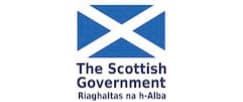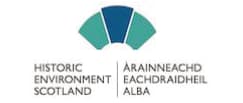x The Navigation Handling Box
Buried treasure, a lost city, or to find your nearest petrol station. We all use maps for different things, but the one thing we have in common is that we use them to navigate or find our way. David Livingstone did the very same thing when he created and used maps to help navigate across Africa in the 1850s during his Trans-African expedition.
This summer the National Lottery Heritage Fund funded Birthplace Project has introduced a new learning resource: a handling box focusing on how David navigated from coast to coast during his Trans-African expedition. Elena De Marco, a MSc Museum Studies student on work placement from the University of Glasgow, developed this handling box as part of her summer placement during 2019.
The box includes replicas of tools used by David, which you can see in the picture. including a sextant, telescope, magnifying glass, and compass. The box also includes a map David made on his journey and another which maps his journey through the African continent.
These objects are used as prompts for the resources provided with them. The resources focus on maths and literary skills, while still being fun and encouraging discovery. ‘Navigating like an explorer’ is a resource that focuses on compasses, starting with a compass experiment where groups can see how the first compasses were made and learn about magnetism. An Adventure with David allow learners to be creative and take their very own 2D David on an adventure and then retell their journey through a short story. The box also includes a board game – ‘Coast to Coast’ which gets participants practising their navigational skills and see what it was like before GPS! These are just a few of the seven resources included with the box.
Why did we focus on the Trans-African journey?
This expedition was an early success story for David, but the 4,000-mile journey also holds a lot of challenges and shows David’s newly acquired navigational skills. After returning to Cape Town and sending his family to England, David spent time learning how to navigate using tools such as the sextant and the stars from experts including Sir Thomas Maclear. Maclear was the director of the Royal Observatory in Cape Town. With David being new to these navigational practices it provides a wonderful opportunity to learn alongside him, and understand the technology used in Victorian times to navigate.
What can you learn from the box?
The box is a tool for various learning experience. The box and the resources are there to help you learn not only about David’s Trans-African Expedition, but also about the importance of objects in telling the story of our heritage and collective history. Through reading the objects in the box children can gain skills in critical thinking, observation, organisation, and planning.
Where can you see the navigation box?
With the David Livingstone Birthplace Museum under renovation, we will be bringing the box to different events throughout the Summer and the year. Send us an email if you’d like to test the box out with our class or your group. To get in touch for further information please email info@dltrust.uk.
The David Livingstone Birthplace Museum fully acknowledges the challenges around colonial history and exploration. By focussing on the science behind navigation we’ve created a learning resource suitable to the target audience group. As part of the Birthplace Project we are working towards uncovering some of the hidden histories and the more challenging parts of Livingstone’s extraordinary life.
If you have any feedback you would like to share please contact us on info@dltrust.uk.
Thank you!
Also see more postings at in the David Livingstone Birthplace Project Blog.


